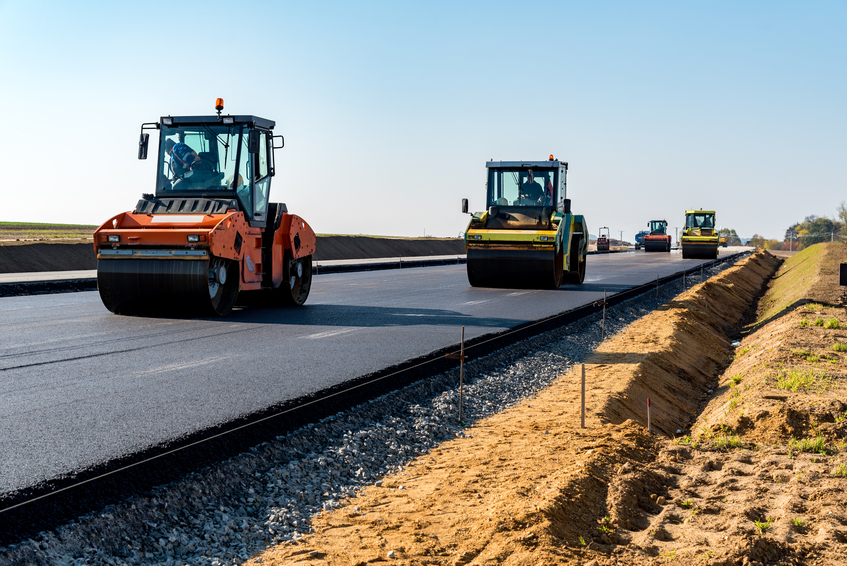Texas Transportation and Ethics 15 PDH Discount Package 2
Courses in this Package
Low-Cost Treatments for Horizontal Curve Safety (C08-020)
Safety Evaluation of Centerline and Shoulder Rumble Strips (C04-048)
Durability of Geosynthetics for Highway Applications (C01-018)
Ethics in Professional Practice (LE2-007)

This online PDH course primarily covers engineering countermeasures for horizontal curve safety that are relatively low-cost, such as signage and pavement markings.
This course is intended to provide information specifically relating to lower volume two-lane roads and the agencies that manage them. It will help transportation agencies and their crews understand the available countermeasures and how to select and apply them.
This 8 PDH online course is applicable to traffic engineers, local transport agencies, design professionals and personnel who wish to understand the available horizontal curve safety countermeasures and how to select and apply them.
This PE continuing education course is intended to provide you with the following specific knowledge and skills:
- Learning about the two components of safety improvements
- Familiarization with the markings, signs, and pavement countermeasures that are used to improve horizontal curve safety
- Addressing the importance of roadside conditions and improvement opportunities
- Familiarization with the possible means of improving intersections
Upon successful completion of the quiz, print your Certificate of Completion instantly. (Note: if you are paying by check or money order, you will be able to print it after we receive your payment.) For your convenience, we will also email it to you. Please note that you can log in to your account at any time to access and print your Certificate of Completion.

This online engineering PDH course describes the strategy involving the application of shoulder rumble strips (SRS) and centerline rumble strips (CLRS) in combination. This strategy is intended to reduce the frequency of crashes by alerting drivers that they are about to leave the travelled lane. While research has been published on the safety effectiveness of SRS or CLRS used in isolation, the effectiveness of the combined treatment has not been shown.
Geometric, traffic, and crash data were obtained at treated two-lane rural road locations in Kentucky, Missouri and Pennsylvania. To account for potential selection bias and regression-to-the-mean, an Empirical Bayes (EB) before-after analysis was conducted using reference groups of untreated two-lane rural roads with similar characteristics to the treated sites. A slightly different approach was required for the analysis of the treatment sites in Missouri, which is installing rumble strips on two-lane rural roads whenever a resurfacing project is undertaken. As a result, a suitable reference group with no rumble strips for this road type presently or in the near future did not exist. The analysis also controls for changes in traffic volumes over time and time trends in crash counts unrelated to the treatment.
This 4 PDH online course is intended for traffic engineers, design professionals and construction personnel who are involved in the design and application of centerline and shoulder rumble strips.
This PE continuing education course is intended to provide you with the following specific knowledge and skills:
- Understanding the background information about the strategy and the study
- Familiarizing with previous research of SRS and CLRS
- Learning about the Empirical Bayes (EB) methodology used for the evaluation
- Understanding the data collection of the three States in study
- Familiarizing with the SPFs developed for each State
- Familiarizing with the before-after evaluation results of crashes
Upon successful completion of the quiz, print your Certificate of Completion instantly. (Note: if you are paying by check or money order, you will be able to print it after we receive your payment.) For your convenience, we will also email it to you. Please note that you can log in to your account at any time to access and print your Certificate of Completion.

This online engineering PDH course presents a study that addresses various aspects of geosynthetic durability to develop procedures that could be used to predict long-term strength losses of geosynthetics used in highway applications. These procedures are essential to designers for allowing tensile capacity for geosynthetics used primarily in mechanically stabilized earth (MSE) retaining walls, reinforced soil slopes, and foundation stabilization.
This study was initiated to allow voiced concerns that stress-cracking potential was not being considered in developing the allowable tension load capacity for design when using high-density polyethylene (HDPE) geogrids. Stress cracking is a potential mode of failure occurring in thermoplastic materials that are under a sustained stress significantly lower than the material’s room temperature yield strength, resulting in quasi-brittle fracture of the material. This is also known as slow crack growth and environmental stress cracking (ESC) when in contact with certain aqueous solutions.
This 1 PDH online course is applicable to all civil engineers, highway design professionals, transportation planners, material manufacturers and all personnel interested in learning about geosynthetics for highway applications.
This PE continuing education course is intended to provide you with the following specific knowledge and skills:
- Developing testing protocols necessary to quantify any strength reduction due to aging or stress mechanisms for geosynthetics
- Developing testing protocols for confined stress-strain testing, which could more accurately characterize key engineering properties
Upon successful completion of the quiz, print your Certificate of Completion instantly. (Note: if you are paying by check or money order, you will be able to print it after we receive your payment.) For your convenience, we will also email it to you. Please note that you can log in to your account at any time to access and print your Certificate of Completion.

In this online engineering PDH course, background on the philosophical models that guide ethical behavior is discussed and then applied to specific situations in engineering codes of ethics. This course is based on the American Society of Mechanical Engineers Professional Practice Curriculum, Volume 8, Section: Engineering Ethics.
Many engineering organizations have drafted codes of ethics to which their members are required to commit. Generally, these codes are quite similar and are based on a few fundamental principles which provide guidance to professional engineers in common situations. Nevertheless, there are many difficult or ambiguous situations in which the best ethical solution is difficult to determine.
This 2 PDH online course is intended primarily for engineers seeking to learn ethical principles and how to apply them to their professional practice.
This PE continuing education course is intended to provide you with the following specific knowledge and skills:
-
Determining ethical behavior using several philosophical models
-
Evaluating a practical situation in terms of a professional code of ethics
-
Identifying situations that represent conflicts of interest and formulate a proper response
-
Applying the standards of professional ethics in technical communication
-
Recognizing environmental impacts of engineering work
-
Considering principles of sustainable development in the performance of professional duties
In this professional engineering CEU course, you need to review "Ethics in Professional Practice" published by the American Society of Mechanical Engineers (ASME). (This course document is reproduced by permission of the ASME (www.asme.org). You may also download from or view this course document on the ASME's website by clicking on Ethics in Professional Practice).
Once you complete your course review, you need to take a multiple-choice quiz consisting of fifteen (15) questions to earn 2 PDH credit. The quiz will be based on this ASME publication.
Upon successful completion of the quiz, print your Certificate of Completion instantly. (Note: if you are paying by check or money order, you will be able to print it after we receive your payment.) For your convenience, we will also email it to you. Please note that you can log in to your account at any time to access and print your Certificate of Completion.